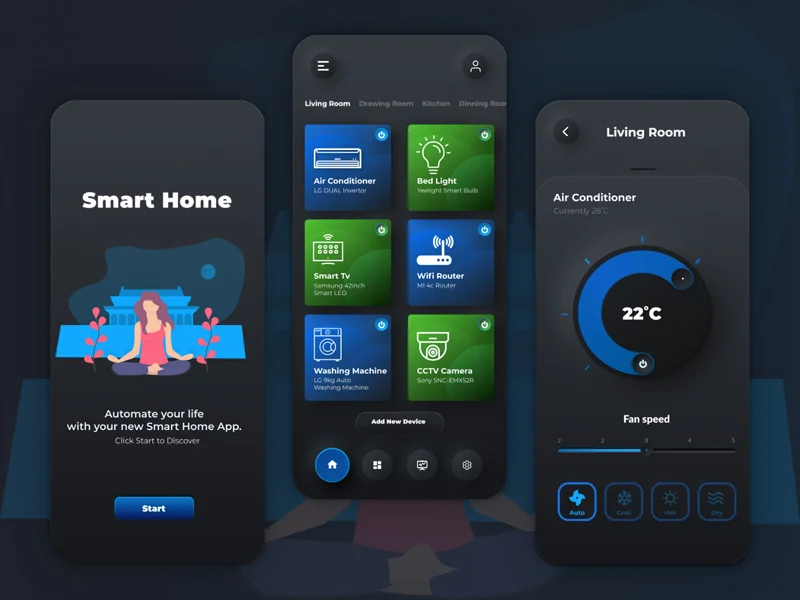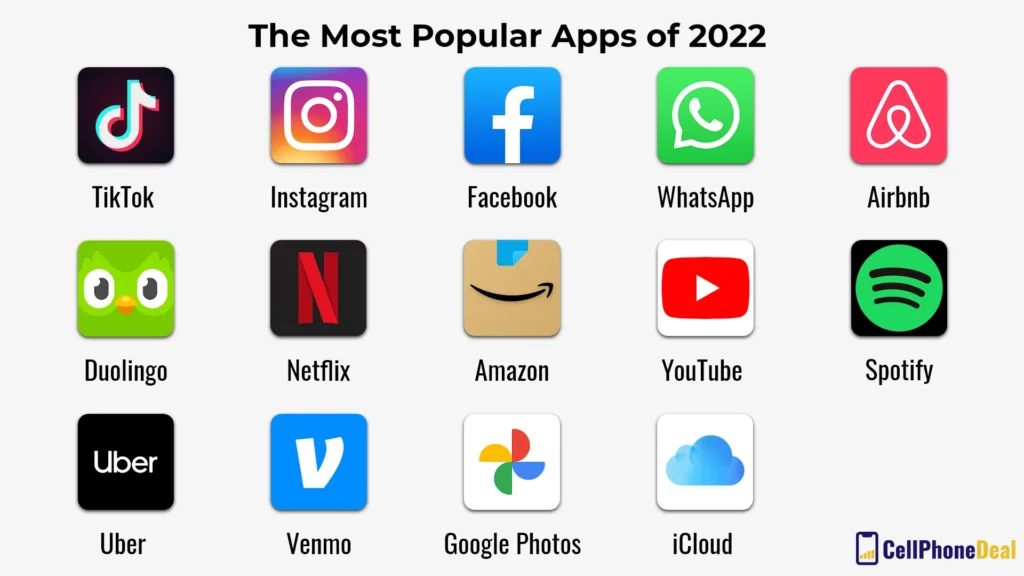Smart home control has become an essential part of modern living, allowing homeowners to automate and remotely manage various aspects of their homes. Essential apps for home automation provide users with the ability to control lighting, thermostat, security systems, and other smart devices from their smartphones or tablets. These apps offer convenience, energy efficiency, and peace of mind for homeowners, making them an integral part of the smart home experience.
Many people are curious about the integration of voice control in smart home apps, which allows users to control their devices using voice commands. Additionally, the ability to create customized automation routines and schedules is another popular feature that users look for in essential home automation apps. Some may also be interested in learning about the compatibility of these apps with different smart devices and platforms, as well as the level of security and privacy measures in place to protect their data. Overall, essential apps for home automation offer a wide range of features and capabilities that cater to the diverse needs and preferences of modern homeowners.
1. What is Smart Home Control?
Smart home control refers to the use of technology to automate and control various devices and systems within a home. This can include lighting, heating, air conditioning, security cameras, door locks, and more. By using smart home control apps, homeowners can remotely monitor and manage their home’s systems, increasing convenience, energy efficiency, and security.
These apps can be accessed from a smartphone, tablet, or computer, allowing users to adjust settings, receive alerts, and even integrate with other smart devices and platforms. Smart home control apps provide a centralized hub for managing and optimizing the various aspects of a modern connected home.
2. Benefits of Smart Home Control Apps
Smart home control apps offer a range of benefits for homeowners. They provide the convenience of being able to monitor and control home systems from anywhere, whether you’re at work, on vacation, or simply relaxing in another room. This can lead to increased energy efficiency and cost savings, as users can adjust settings to minimize energy usage when no one is home.
Furthermore, smart home control apps can enhance home security by allowing users to remotely monitor security cameras, lock or unlock doors, and receive alerts for unusual activity. They also offer the flexibility to create customized schedules and automation routines, such as adjusting lighting and thermostat settings based on time of day or occupancy.
3. Popular Smart Home Control Apps
There are numerous smart home control apps available, each offering its own set of features and compatibility with different devices and platforms. Some of the most popular smart home control apps include Amazon Alexa, Google Home, Apple HomeKit, Samsung SmartThings, and Philips Hue. These apps often work with a wide range of smart devices and allow for seamless integration and control.
Additionally, many home security and automation companies offer their own dedicated apps for controlling their products and systems. These apps may provide more specialized features tailored to specific devices, such as security cameras, alarms, and sensors.
4. Remote Monitoring and Control
One of the key features of smart home control apps is the ability to remotely monitor and control home systems. Users can check the status of devices, such as whether lights are on or off, adjust thermostat settings, and even receive real-time alerts for events such as motion detection or door openings. This level of remote access provides peace of mind and the ability to respond quickly to changing circumstances.
Remote monitoring and control also extends to home security, allowing users to view live camera feeds, receive notifications for suspicious activity, and arm or disarm security systems from anywhere with an internet connection. This can be especially valuable for homeowners who travel frequently or have second homes.
5. Integration with Other Smart Devices
Many smart home control apps offer the ability to integrate with a wide range of other smart devices and platforms. This can include smart thermostats, lighting systems, door locks, garage door openers, and more. By centralizing control through a single app, users can create customized automation routines and scenes that coordinate the actions of multiple devices.
Integration with voice assistants, such as Amazon Alexa and Google Assistant, further expands the capabilities of smart home control apps. Users can use voice commands to control devices, check the status of systems, and even receive spoken notifications and alerts. This seamless integration enhances the overall user experience and accessibility of smart home technology.
6. Energy Efficiency and Cost Savings
Smart home control apps can contribute to increased energy efficiency and cost savings by allowing users to monitor and adjust their home’s energy usage. This can include setting schedules for heating and cooling systems, remotely turning off lights and appliances, and receiving insights into energy consumption patterns. By optimizing energy usage, homeowners can reduce their utility bills and minimize their environmental impact.
Some smart home control apps also offer features such as energy usage tracking and analysis, providing homeowners with valuable information to make informed decisions about their energy consumption habits. This level of visibility and control over energy usage can lead to long-term savings and a more sustainable home environment.
7. Customized Automation and Scheduling
Smart home control apps enable users to create customized automation routines and scheduling for their home systems. This can include setting automatic lighting schedules, adjusting thermostat settings based on occupancy patterns, and coordinating the actions of multiple devices to create personalized scenes. These automation capabilities can enhance convenience and comfort while also saving time and effort for homeowners.
By leveraging the power of automation, smart home control apps allow for seamless integration and coordination of various devices, creating a more cohesive and responsive home environment. Users can also adjust and fine-tune their automation routines over time to better suit their preferences and lifestyle, offering a high level of flexibility and adaptability.
8. Enhanced Home Security and Monitoring
Smart home control apps play a key role in enhancing home security and monitoring capabilities. Users can receive real-time alerts for events such as motion detection, door openings, and alarm triggers, allowing for immediate response and action. Additionally, remote access to security cameras and sensors provides visibility and awareness of the home’s surroundings, even when the homeowner is away.
Integration with security systems and devices, such as smart door locks and window sensors, further strengthens the overall security posture of the home. Smart home control apps can also facilitate the coordination of security measures, such as automatically arming the alarm system when the last occupant leaves the house. These features help homeowners feel more secure and in control of their home’s safety.
9. User-Friendly Interface and Accessibility
Smart home control apps are designed to provide a user-friendly interface and intuitive controls, making it easy for homeowners to manage their home systems. The apps often feature clear and organized layouts, allowing users to quickly access and adjust settings for different devices and functions. Additionally, many apps offer the flexibility to customize and personalize the user experience based on individual preferences.
Accessibility is a key consideration for smart home control apps, with support for various devices and platforms, including smartphones, tablets, and computers. This ensures that users can easily access and control their home systems from anywhere, using the devices that are most convenient for them. Some apps also offer accessibility features to accommodate different user needs and preferences.
10. Future Trends and Innovations
The field of smart home control apps continues to evolve, with ongoing trends and innovations shaping the future of home automation. This includes the integration of artificial intelligence and machine learning to provide more personalized and predictive automation capabilities. Additionally, advancements in voice recognition and natural language processing are enhancing the interaction and control of smart home systems through voice commands.
Furthermore, the expansion of smart home ecosystems and interoperability standards is enabling greater connectivity and compatibility between different devices and platforms. This allows for more seamless integration and control of diverse smart home products, creating a more cohesive and unified user experience. As technology continues to advance, smart home control apps are expected to offer even more sophisticated features and capabilities, further enhancing the convenience and benefits of home automation.
| App Name | Description |
|---|---|
| Amazon Alexa | Voice-controlled virtual assistant for managing smart home devices, setting reminders, and playing music. |
| Google Home | Allows users to control smart home devices, play media, and get answers from Google using voice commands. |
| SmartThings | Connects and controls various smart home devices from different brands, creating a seamless automation system. |
| Apple HomeKit | Enables users to control smart home accessories using Apple devices and Siri voice commands. |
| IFTTT | Automates tasks and creates custom actions between different apps and devices, enhancing home automation. |



